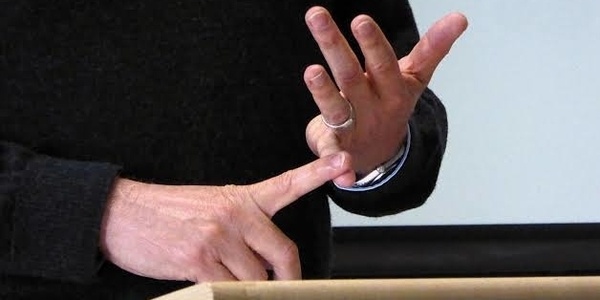India Launches Largest Indian Sign Language Digital Repository on Sign Language Day 2025
On September 23, 2025, the Indian Sign Language Research and Training Centre (ISLRTC), under the Department of Empowerment of Persons with Disabilities (DEPwD), Ministry of Social Justice & Empowerment, unveiled a milestone for the Deaf community the largest Indian Sign Language (ISL) digital repository, comprising 3,189 e-content videos. The announcement was made during the “Sign Language Day 2025” celebration at Bhim Hall, Dr. Ambedkar International Centre, New Delhi. The event was organized to coincide with the International Day of Sign Languages, as declared by the United Nations, reinforcing India’s commitment to recognizing sign language as a fundamental human right.Voices of Leadership and CommitmentThe event was graced by Dr. Virendra Kumar, Hon’ble Union Minister for Social Justice & Empowerment, along with Shri Ramdas Athawale and Shri B.L. Verma, Hon’ble Ministers of State, and senior officials including Shri Rajesh Aggarwal, Secretary, DEPwD, and Ms. Manmeet Kaur Nanda, Additional Secretary, DEPwD. He further added that these initiatives are designed to open doors to education, skills, employment, and empowerment, paving the way for a society where inclusivity is not an afterthought but a foundation. Shri Ramdas Athawale highlighted the government’s focus on accessibility, while Shri B.L. Verma called for greater collaborations to achieve the vision of an “Inclusive India.” Shri Rajesh Aggarwal stressed the importance of integrating ISL into schools, envisioning a future where every Deaf school would have skilled Deaf teachers.A Repository of Knowledge and EmpowermentThe ISL digital repository is more than just a collection of videos. It is a gateway to knowledge and education. With 3,189 e-content resources, it becomes the largest sign language repository in the world, enabling students, educators, and researchers to access standardized content anytime, anywhere. This initiative is particularly significant for Deaf students who have long faced limited access to study materials in their own language. By bridging this gap, India sets a global example of how technology and inclusivity can work hand in hand.Expanding Horizons: New Initiatives LaunchedAlongside the digital repository, the event also saw the launch of several key initiatives that reflect a comprehensive approach to Deaf education and empowerment. The ISLRTC Bi-Annual Newsletter will keep the community informed about developments and opportunities, while the Postgraduate Diploma Courses (PGDISLI & PGDTISL) aim to train more experts in Indian Sign Language. A Six-Month Online ISL Training Programme will provide broader accessibility for learners across the country, complemented by standardized teaching-learning materials for DISLI and DTISL courses. To strengthen learning in science and technology, 100 STEM terms in ISL have been introduced, and the English Language Teaching Programme with TEACH will help bridge language gaps. The integration of ISL with the “Project Inclusion App” ensures practical accessibility, while the release of 18 NBT books in ISL expands literary resources for the Deaf community. Together, these initiatives form a robust ecosystem for education, skills development, and empowerment.National ISL CompetitionThe celebration also hosted the felicitation ceremony for the 8th National Indian Sign Language Competition 2025, where winners across 13 categories were awarded trophies and certificates. Students from 30 Deaf schools and Teacher Training Institutes (TTIs) participated, showcasing their creativity, talent, and linguistic competence in ISL. For many young participants, this platform was more than a competition; it was a stage where their voices, through sign language, were heard and celebrated. From ceremonial lamp-lighting to cultural performances, from the launch of digital tools to heartfelt speeches, the celebration carried a single message: sign language rights are human rights.India’s commitment, shown in these initiatives, demonstrates a clear path forward to a society where education and opportunities are not limited by disability but expanded by inclusivity. As the event concluded with applause and smiles, it reaffirmed that no human rights can be realized without sign language rights. India has taken a decisive step toward an inclusive India, a nation where diversity in language and ability is celebrated, not sidelined.


.jpeg)